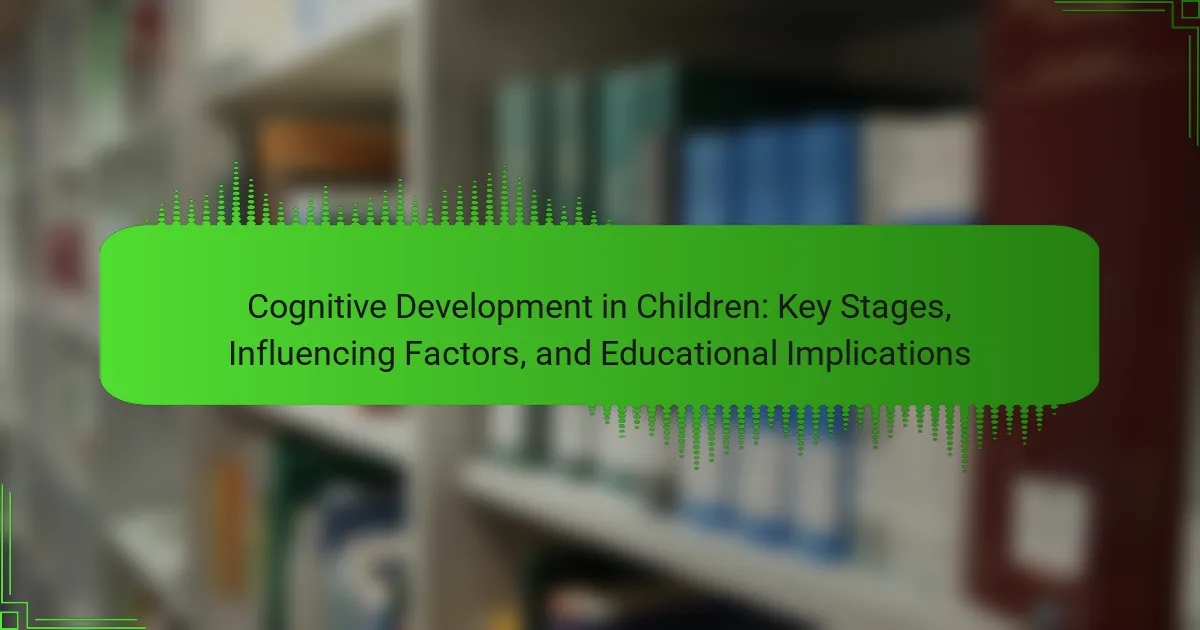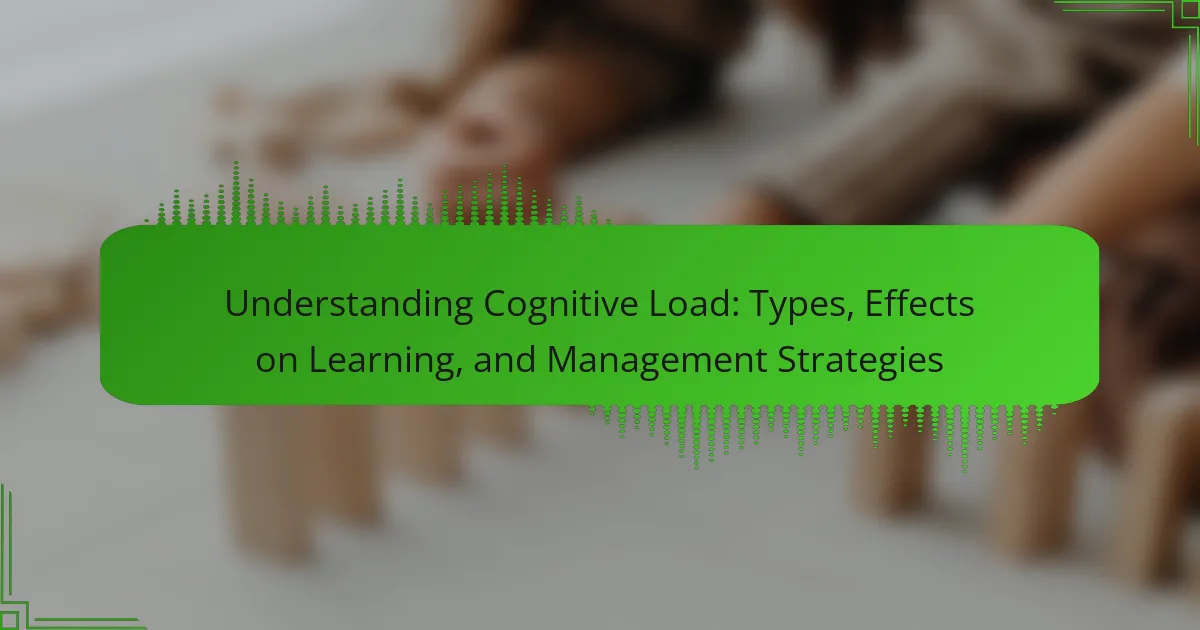Language acquisition refers to the process through which individuals learn and develop language, primarily occurring in early childhood through interactions with caregivers and the environment. The article explores various theories of language acquisition, including behaviorist, nativist, and interactionist perspectives, highlighting how these theories provide insights into the emergence and evolution of language skills. It emphasizes the significant role of cognitive influences, such as memory and attention, in enhancing vocabulary acquisition and understanding language patterns. Additionally, the article discusses the practical implications of understanding language acquisition for education, communication, and early intervention in language delays or disorders, underscoring the importance of social interaction in language learning.

What is the Nature of Language Acquisition?
Language acquisition is the process through which individuals learn and develop language. This process occurs naturally in early childhood, primarily through interaction with caregivers and the environment. Children are exposed to linguistic input, which they analyze and internalize. Theories of language acquisition include behaviorist, nativist, and interactionist perspectives. Each theory offers insights into how language skills emerge and evolve. Research indicates that children possess an innate capacity for language, as evidenced by their ability to learn complex structures rapidly. Studies show that exposure to language-rich environments enhances acquisition. Thus, the nature of language acquisition is a complex interplay of innate abilities and social interaction.
How do we define language acquisition?
Language acquisition is the process through which individuals learn to understand and communicate in a language. This process occurs naturally in children as they are exposed to linguistic input from their environment. Research indicates that language acquisition involves several stages, including babbling, single words, and complex sentences. Theories such as Noam Chomsky’s Universal Grammar suggest that humans are biologically equipped for language learning. Studies show that children can acquire language skills without formal instruction, highlighting the innate aspects of this process. Additionally, cognitive development plays a critical role in how language is acquired and used.
What are the key characteristics of language acquisition?
Language acquisition involves several key characteristics. These include the ability to learn language naturally, often through interaction. Children acquire language in stages, starting with babbling and progressing to full sentences. The critical period hypothesis suggests there is an optimal time for language learning during early childhood. Language acquisition is influenced by social interaction, as communication with caregivers enhances learning. Additionally, children demonstrate an innate capacity for language, as proposed by Noam Chomsky’s theory of universal grammar. These characteristics collectively highlight the complex process of how individuals learn to communicate effectively.
How does language acquisition differ from language learning?
Language acquisition is a natural process, while language learning is a formal educational endeavor. Acquisition occurs subconsciously and is often associated with first language development in children. It involves picking up language through exposure and interaction. Learning, on the other hand, is a conscious effort to understand and apply grammatical rules and vocabulary. This process typically takes place in structured environments like classrooms. Research indicates that acquisition is more effective for fluency, as it relies on immersion and context. In contrast, learning can lead to a more analytical understanding of language but may lack the same level of proficiency.
What are the primary theories of language acquisition?
The primary theories of language acquisition are the behaviorist, nativist, and interactionist theories. The behaviorist theory posits that language is learned through reinforcement and imitation. B.F. Skinner proposed this view, emphasizing environmental stimuli and responses. The nativist theory argues that humans are biologically predisposed to acquire language. Noam Chomsky introduced the idea of an innate language faculty, suggesting universal grammar. The interactionist theory combines both perspectives, asserting that social interaction plays a crucial role in language development. This theory highlights the importance of communication between children and caregivers. Each theory provides valuable insights into the complex process of language acquisition.
What is the nativist theory and its implications?
The nativist theory posits that language acquisition is an innate ability. This theory suggests that humans are born with a pre-existing capacity for language. It emphasizes the role of biological factors over environmental influences. Proponents argue that children naturally develop language skills without explicit teaching. Noam Chomsky is a key figure associated with this theory. He introduced the concept of a “universal grammar” that underlies all languages. Implications of the nativist theory include a focus on the cognitive structures that facilitate language learning. This perspective influences educational approaches and linguistic research.
How does the behaviorist theory explain language acquisition?
The behaviorist theory explains language acquisition as a process of conditioning. According to this theory, children learn language through reinforcement and imitation. They mimic the speech of adults and receive positive feedback. This feedback encourages them to continue using certain words and structures. Over time, repeated exposure and reinforcement lead to language development. B.F. Skinner, a key proponent, emphasized operant conditioning in this process. He demonstrated that language is acquired through environmental interactions. Studies have shown that children respond to verbal stimuli and adjust their speech accordingly. This theory highlights the importance of social interaction in learning language.
What role does the interactionist theory play in language development?
The interactionist theory plays a crucial role in language development by emphasizing the importance of social interaction in the learning process. This theory suggests that language acquisition occurs through the interplay between innate abilities and environmental influences. Children learn language by engaging with caregivers and peers, which fosters their linguistic skills. Research indicates that meaningful conversations between adults and children enhance vocabulary and grammar understanding. For example, studies show that children exposed to rich linguistic environments develop language skills more rapidly. Thus, the interactionist perspective highlights that language learning is a collaborative effort, integrating cognitive and social dimensions.
What stages are involved in language acquisition?
The stages involved in language acquisition are typically categorized into four main phases. The first stage is the pre-linguistic stage, occurring from birth to around 12 months. During this stage, infants produce cooing and babbling sounds. The second stage is the one-word stage, from about 12 to 18 months. In this phase, children begin to use single words to convey meaning. The third stage is the two-word stage, occurring between 18 to 24 months. Children start combining two words to form simple sentences. The final stage is the multi-word stage, beginning around 24 months and continuing into early childhood. In this phase, children use longer sentences and demonstrate more complex grammar. These stages are supported by developmental linguistics research, indicating a predictable progression in language skills among children.
What are the typical stages of language development in children?
The typical stages of language development in children include cooing, babbling, one-word speech, two-word combinations, and complex sentences. Cooing occurs around 6 to 8 weeks of age. During this stage, infants produce vowel-like sounds. Babbling follows, typically starting at 4 to 6 months. Babies begin to combine consonants and vowels. One-word speech emerges around 12 months. Children use single words to convey meaning. By 18 to 24 months, two-word combinations appear. This stage shows the beginning of grammar usage. Complex sentences develop by age 3 to 4 years. Children start to use longer sentences with more structure. These stages are consistent across different cultures and languages, demonstrating universal patterns in language acquisition.
How do these stages vary across different languages?
Stages of language acquisition vary significantly across different languages. For instance, languages with rich inflectional morphology, like Russian, may present more complex grammatical structures earlier in acquisition. In contrast, languages like Mandarin, which rely heavily on context and tone, may emphasize pragmatic skills sooner. Research indicates that children learning English typically follow predictable stages, such as babbling, one-word, and multi-word utterances. However, children acquiring languages with different syntactic structures may exhibit variations in these stages. For example, studies show that children learning Japanese often develop noun phrases differently due to the language’s syntactic order. Furthermore, the presence of gendered nouns in languages like Spanish can influence the acquisition of grammatical gender at an early age. Such variations highlight that cognitive influences and linguistic structures shape the stages of language acquisition across different languages.

How do cognitive influences affect language acquisition?
Cognitive influences significantly impact language acquisition by shaping how individuals process and understand language. Cognitive development facilitates the ability to recognize patterns in language. This includes understanding syntax, semantics, and phonetics. Research indicates that cognitive skills, such as memory and attention, enhance vocabulary acquisition. For example, children with better working memory can learn new words more effectively. Additionally, cognitive theories suggest that language is acquired through interaction with the environment. The interaction promotes cognitive engagement, which is crucial for language learning. Studies show that children exposed to rich linguistic environments develop language skills more rapidly. Thus, cognitive influences are essential for effective language acquisition.
What cognitive processes are involved in language acquisition?
Language acquisition involves several cognitive processes. These include perception, memory, and categorization. Perception allows individuals to recognize sounds and patterns in speech. Memory aids in retaining vocabulary and grammatical structures. Categorization helps in organizing linguistic information into meaningful units. Additionally, abstraction enables learners to generalize language rules from specific instances. These processes work together to facilitate understanding and production of language. Studies show that infants use statistical learning to identify patterns in language input. This demonstrates the role of cognitive processes in early language development.
How does memory impact language learning?
Memory plays a crucial role in language learning. It enables the retention of vocabulary, grammar rules, and pronunciation. Short-term memory helps learners process new information. Long-term memory allows for the storage and retrieval of language knowledge over time. Research indicates that the ability to memorize words correlates with language proficiency. For instance, studies show that learners with better memory skills often achieve higher fluency. Additionally, mnemonic devices can enhance memory retention, aiding language acquisition. Overall, memory significantly influences how effectively individuals can learn and use a new language.
What role does attention play in language acquisition?
Attention plays a crucial role in language acquisition. It facilitates the processing of linguistic input. When learners focus their attention, they are more likely to notice and remember language patterns. Research shows that attention enhances the ability to learn vocabulary and grammar. For instance, studies indicate that children who exhibit higher levels of attention tend to acquire language skills more rapidly. Attention also helps filter out irrelevant stimuli, allowing for better comprehension of language. The relationship between attention and language acquisition is supported by cognitive theories, which emphasize the importance of attentional resources in learning processes.
How do environmental factors influence language acquisition?
Environmental factors significantly influence language acquisition. These factors include social interactions, cultural context, and exposure to language. Children learn language through interactions with caregivers and peers. Rich linguistic environments enhance vocabulary and grammar skills. Studies show that children exposed to diverse language inputs develop better language abilities. For example, research by Hart and Risley (1995) indicates that children from language-rich homes hear thousands more words than those from less stimulating environments. This disparity affects their language development outcomes. Additionally, cultural practices shape the way language is used and understood. Overall, the environment plays a crucial role in shaping language acquisition processes.
What is the impact of social interaction on language development?
Social interaction significantly impacts language development. It provides opportunities for children to practice language skills in real contexts. Engaging with caregivers and peers enhances vocabulary acquisition. Interaction also encourages the use of grammar and sentence structure. Studies show that children exposed to rich verbal interactions develop language skills more rapidly. For example, Hart and Risley’s research found that children from language-rich environments had larger vocabularies. This underscores the importance of social interaction in fostering effective communication skills.
How does exposure to multiple languages affect cognitive development?
Exposure to multiple languages positively affects cognitive development. Bilingualism enhances executive functions such as problem-solving and multitasking. Studies show that bilingual individuals exhibit greater cognitive flexibility. They can switch between tasks more efficiently than monolinguals. Research indicates improved memory and attention skills in multilingual children. A study by Bialystok et al. (2012) found that bilingual children performed better on tasks requiring cognitive control. These cognitive benefits arise from the brain’s need to manage multiple language systems. Overall, exposure to multiple languages fosters advanced cognitive skills.

What are the practical implications of understanding language acquisition?
Understanding language acquisition has significant practical implications for education and communication. It informs teaching methods, enabling educators to tailor instruction based on developmental stages. Knowledge of language acquisition helps in creating effective curricula that align with cognitive abilities.
Additionally, it aids in identifying language delays or disorders early. Early intervention can lead to improved outcomes for children facing challenges. Understanding the nuances of language acquisition also enhances communication strategies in multilingual settings. This fosters better interactions among diverse populations.
Research shows that children acquire language through social interaction, which highlights the importance of engaging environments. Theories such as the Interactionist approach emphasize the role of social context in learning. Thus, understanding language acquisition equips educators and parents with tools to support language development effectively.
How can knowledge of language acquisition theories improve teaching methods?
Knowledge of language acquisition theories can significantly improve teaching methods. Understanding these theories allows educators to tailor their approaches to meet learners’ needs. For instance, the Input Hypothesis by Stephen Krashen emphasizes the importance of comprehensible input. This suggests that teachers should provide language exposure that is slightly above the current proficiency level of students.
Moreover, Vygotsky’s Social Interaction Theory highlights the role of social interaction in language learning. Teachers can incorporate collaborative activities that promote peer interaction. Additionally, understanding the Critical Period Hypothesis informs educators about optimal times for language acquisition. This knowledge encourages timely interventions for language learners.
Research supports these theories. A study by Long (1983) found that interaction facilitates language development. Another study by Swain (1985) emphasized the importance of output in language acquisition. These findings reinforce the need for informed teaching strategies. Overall, knowledge of language acquisition theories equips teachers with effective methods to enhance student learning outcomes.
What strategies can educators use to support language development?
Educators can use various strategies to support language development. One effective strategy is to implement interactive reading sessions. These sessions encourage children to engage with the text. This engagement enhances vocabulary and comprehension skills. Another strategy involves using visual aids to reinforce language concepts. Visuals help students connect words with meanings. Additionally, incorporating storytelling activities fosters creativity and language use. Storytelling allows children to practice language in context. Group discussions also promote language skills. They encourage students to articulate thoughts and listen to peers. Finally, providing consistent feedback helps students improve their language abilities. Feedback guides students in their language development journey.
What resources are available for parents to aid language acquisition in children?
Parents can utilize various resources to aid language acquisition in children. These include books designed for early language development. Interactive storybooks encourage participation and enhance vocabulary. Educational apps offer engaging activities that promote language skills. Language classes for young children provide structured learning environments. Speech therapy resources assist children with specific language difficulties. Parent support groups share strategies and experiences among families. Online forums and websites offer tips and activities for language enrichment. Research shows that early exposure to language-rich environments significantly boosts language development.
The primary entity of this article is language acquisition, defined as the natural process through which individuals, particularly children, learn to understand and communicate in a language. The article explores various theories of language acquisition, including behaviorist, nativist, and interactionist perspectives, and outlines the stages involved in language development, such as cooing, babbling, and the formation of complex sentences. It also examines the cognitive influences on language acquisition, including memory and attention, as well as the impact of environmental factors and social interactions. The practical implications of understanding language acquisition for education and communication strategies are highlighted, providing insights for educators and parents to support children’s language development effectively.



